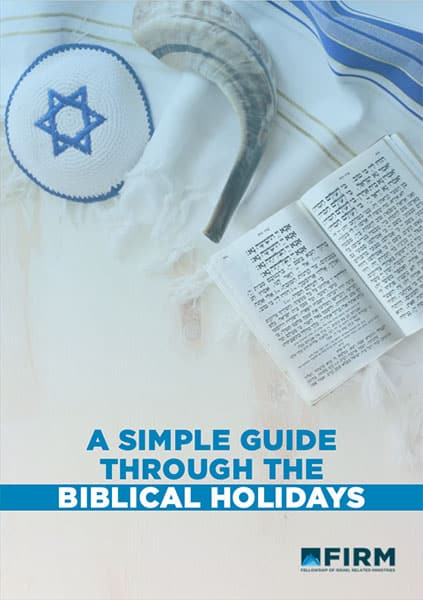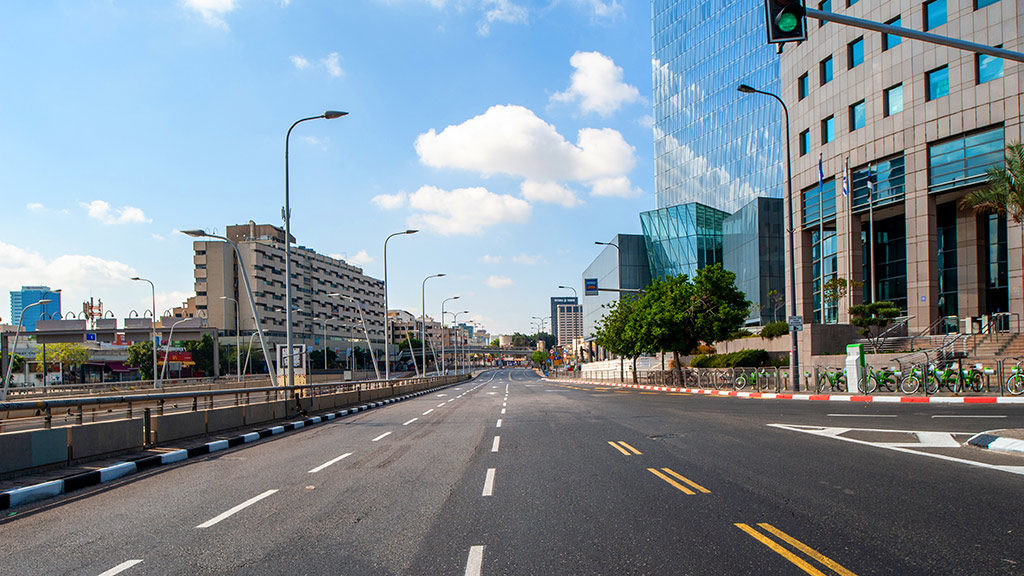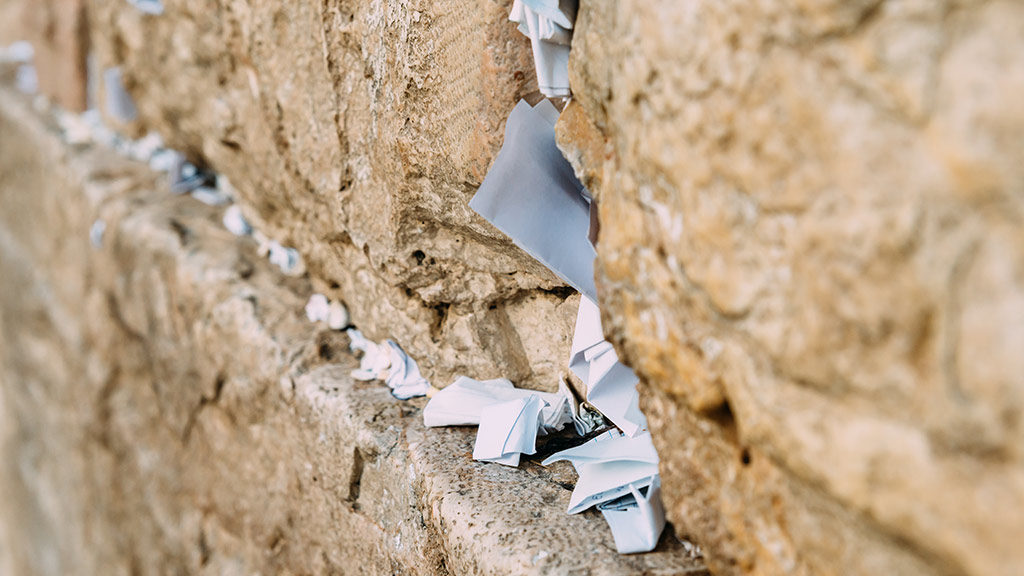What is Yom Kippur?
If you ask any Jewish person, “what is the holiest day of the year?”, they will tell you without hesitation: Yom Kippur – the Day of Atonement. God set it apart already in the days of Moses. In the Bible and in Israel today, it can be referred to as the day of redemption, purification and reconciliation.
This unique holiday is a day of complete fasting, and even the less observant or less religious Jews quiet down their lives for 25 hours. In Israel specifically, everything comes to a full stop, including airports and traffic. Time is set aside to reflect on one’s life and to correct any wrongs. Yom Kippur is the time to ask God for forgiveness.
The Day of Atonement – One of a Kind
Almost all biblical holidays relate to historical events and the natural cycle of the year. The Passover is a memorial to the departure from Egypt, the festival of Shavuot celebrates the full harvest (among other things), and Sukkot commemorates wandering of the Hebrews in the desert. On Purim and Hanukkah, we celebrate miraculous deliverance of the Jewish people.
But not Yom Kippur. The holiday relates neither to events in nature nor a historical event.
All other holidays, in addition to the spiritual symbolism and prophetic message, carry an atmosphere of joy and include a feast with delicious dishes. They are a time of thanksgiving and celebration.
And again, this is not the case for the Day of Atonement. There are no banquets nor festivity.
What happens on Yom Kippur?
The Day of Atonement points to the final judgment that is to come, following the return of the Messiah. The goal of fasting and abstaining from work is to focus solely on God and His grace. By denying one’s flesh, one learns to distinguish what is most important and what is secondary in life. We see clearer the difference between truth and fraud.
Along with fasting and denying yourself any pleasures, most Jewish people wear plain white clothing with no jewelry, no leather nor any other elements symbolizing wealth or privilege. This act of humility could be interpreted as either imitating the garments of the priest or burial attire. Both analogies emphasize letting go of any excess.
This Day of Reconciliation was and is very important to every Jewish believer, because it is a reminder that one day they will be reconciled with their God. The Lord of Hosts promised it will happen in just one day: “…I will remove the sin of this land in a single day.” Zechariah 3:9
And on top of that, on Yom Kippur God calls us to repent collectively.
Repenting as One People on the Day of Atonement
Our western world favors individualism. We speak of my church, my community, my calling, or my roles in life. While there is nothing wrong with this, it is the lens by which we read the Scriptures, often without realizing it. Yet, a beautiful aspect of traditional or biblical Jewish culture is the true sense of family. It is a shared responsibility and sense of togetherness.
That is one of the treasured reminders in Yom Kippur.
Several times in Leviticus 23, we read of this collective atonement. Verse 16 says that atonement was for the “uncleanness and rebellion of Israel, whatever their sins have been”. Verse 17 tells us that Aaron is making “atonement for him, his household and the whole community of Israel”.
In verse 21, the priest was to “confess over it [the goat] all the wickedness and rebellion of the Israelites—all their sins…” Verse 34 says “Atonement is to be made once a year for all the sins of the Israelites.”
Atonement for the Nation, not just an Individual
It was clear that if you were a part of Israel, you shared the guilt and could not separate yourself individually. In Jewish culture, it was understood that if someone had sinned in some way, although you weren’t personally involved, you were still guilty.
That is because you are a part of the community, and you let it happen on your watch. There was no picking and choosing. We are all responsible and all share a part. This community and togetherness theme is the language of much of the Scriptures and the church. Especially when it comes to sin and need for atonement.
All have sinned and fall short of the glory of God (Romans 3:23). We are to bear one another’s burdens (Galatians 6:2). Love covers a multitude of sins (1 Peter 4:8).
Sure, we can separate ourselves from messy situations or from family sin issues, even accurately insisting we are blameless. But what we are really doing is removing ourselves from our role in the community of believers.
The Weight of Yom Kippur
As mentioned, the Day of Atonement is the most sacred day of the year in the biblical calendar. Even today in Israel, everything stops to remember the day. Major roads are blocked off and shut down. It allows families to walk and ride bikes down the middle of otherwise busy highways.
On a personal level, some will try to make things right in a strained relationship, ask for forgiveness or extend it when necessary. It’s amazing to see a city or nation all but shut down with the intention of trying to extend or seek mercy for their wrongs. Even if much of it is inspired by tradition. It’s a unique and significant sight.
Yom Kippur in the Bible
Biblically, it was a little more serious. The consequences of working that day would permanently cut off the offender from Israel. It’s also the one day a year that God mandated a fast for everyone. Yet most importantly, on this day the high priest would enter the Holy of Holies to offer an atonement or a covering for the sins of Israel.
In the Temple
Back when the Jewish Temple still adorned the landscape of Jerusalem, Yom Kippur was the only day of the year when the High Priest could enter the Holy of Holies – the most holy place in the Temple.
Two goats were brought before him and lots were cast, to determine which goat would become a sin offering for the people. Over the other goat the Priest was to confess all the wickedness of Israel, and the animal was to be driven out into the desert. It symbolized a release from sins for the entire nation (Leviticus 16).
The priest was to enter behind the veil into the most holy place, and afterwards if we came out alive, it was a testimony that God accepted the sacrifice and forgave their sins. God said that this sacrifice mandate is eternal – God’s people were to honor it throughout the generations.
But if there is no temple today, to offer sacrifices, how can one receive forgiveness of sins?
Our Atonement
Like the High Priest entered the holy place, Jesus went before God the Father to atone for our sins with His own blood (Hebrews 9:12). Instead of the goat, He was the One to shed His blood for us. Despite there being no Temple, He restored the meaning to the Day of Atonement. Jesus fulfilled the command of the Law by becoming the Yom Kippur sacrifice for all mankind.
The day on which our Savior the Messiah was crucified became the day of redemption for all – the day of covering and forgiveness of sins (Zechariah 13:1). Our life and eternity depend on whether we know Him and have accepted Him as the one true Messiah.
As the perfect sacrifice, Isaiah 53:12 says he “was numbered with the transgressors. For he bore the sins of many…” The only One who truly was blameless and didn’t need atonement or a sacrifice, He chose to be in this mess with us as if He did. If we are going to be like Him, how much more should we embrace our place with our brothers?
The Perfect Sacrifice for Yom Kippur
Regardless of who did what, we need to be carrying each other’s burdens, walking together, forgiving, extending grace and fully receiving God’s atonement and perfect sacrifice. This is the message of Yom Kippur.
Thankfully, Yeshua the Messiah made the perfect sacrifice once and for all. While this does ultimately fulfill the requirement for sin, God’s Yom Kippur instructions remain. Leviticus 23:31 “This is to be a lasting ordinance for the generations to come, wherever you live.”
God’s intention was that forever we would have an annual reminder to stop and humble ourselves, address our shortcomings, and celebrate His complete atonement and sacrifice. We are still awaiting His second coming, when He will put an end to all sin and wipe off every tear. He will establish His eternal kingdom in Jerusalem.
And Apostle Paul reminds us that on that day we will also be reconciled with the remnant of Israel:
And in this way all Israel will be saved. As it is written: “The deliverer will come from Zion; he will turn godlessness away from Jacob. And this is my covenant with them when I take away their sins.” Romans 11:26
Let’s take a look at Rosh Hashanah, Yom Kippur, and the 10 Days of Awe that bridges the gap between them!

A Simple Guide Through the Biblical Holidays: Free PDF Download
You may know them as the “Jewish holidays,” but did you know the Bible calls them “Feasts of the LORD”?
We’ve put this guide together for you so that you have all you need to know about these holidays that God calls His own.
Articles Related to The Meaning of Yom Kippur: What is the Day of Atonement
Estimated reading time: 8 minutes

